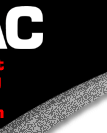




Soldering Alloys
CEAC Solder Alloys are produced to yield high-purity, low-oxygen, spherical metal powders.
Strength and reliability, over long periods of time, are guaranteed by the accurate compositions of CEAC's solder alloys. The choice of the alloy depends primarily on the properties of the base metal. The selection of the solder alloy is also dependent on the method of application. Factors such as melting point, plastic range, speed of wetting, ability to wet, flow and bond to different metals and also appearance after soldering must be considered when selecting the proper alloy.
Lead-free alloys
Our standard and custom formulations are increasingly in demand. CEAC can satisfy all customer requirements.Tin-lead
This the largest single group and the most widely used of the soldering alloys. Most metals can be joined with these alloys ideally with clearances of 0.003 to 0.0005 in. Tin-lead solders are compatible with all types of base-metal cleaners, fluxes, and heating methods. Increasing the tin content of these solders produces better wetting and flow characteristics. Thus, when less tin is used, greater care should be exercised in surface preparation of the metals to be joined.Other Solder Groups available:
Tin-Lead Antimony Cadmium-Zinc Tin-Silver Zinc-Aluminum Tin-Antimony Indium Solders Lead-Silver Fusible Alloys Tin-Zinc
|
Tin Lead Alloys | |||
|
CEAC Alloy |
Nominal Composition |
Temperature | |
|
Liquidus |
Solidus | ||
|
Degrees F |
Degrees F | ||
|
LTS-1 |
Sn 43 Pb 43 Bi 14 |
290 |
310 |
|
LTS-2 |
Sn 63 Pb 37 |
361 |
361 |
|
LTS-3 |
Sn 62 Pb 36 Ag 2 |
350 |
372 |
|
LTS-4 |
Sn 70 Pb 30 |
361 |
378 |
|
LTS-5 |
Sn 60 Pb 40 |
361 |
374 |
|
LTS-6 |
Sn 50 Pb 50 |
361 |
421 |
|
LTS-7 |
Sn 45 Pb 55 |
361 |
441 |
|
LTS-8 |
Sn 40 Pb 60 |
361 |
460 |
|
LTS-9 |
Sn 35 Pb 65 |
361 |
477 |
|
LTS-10 |
Sn 30 Pb 70 |
361 |
491 |
|
LTS-11 |
Sn 25 Pb 75 |
361 |
511 |
|
LTS-12 |
Sn 20 Pb 80 |
361 |
531 |
|
LTS-13 |
Sn 10 Pb 90 |
527 |
570 |
|
LTS-14 |
Sn 1 Pb 97.5 Ag 1.5 |
588 |
588 |
|
LTS-14A |
Sn 10 Pb 88 Ag 2 |
514 |
576 |
|
LTS-15 |
Sn 5 Pb 95 |
518 |
594 |
|
Lead Free Alloys | |||
|
CEAC Alloy |
NominalComposition |
Temperature | |
|
Liquidus |
Solidus | ||
|
Degrees F |
Degrees F | ||
|
LTS-16 |
Sn 96.5 Ag 3.5 |
430 |
430 |
|
LTS-17 |
Sn 95.0 Sb 5.0 |
452 |
464 |
|
LTS-18 |
Sn 100.0 |
450 |
450 |
|
LTS-19 |
Sn 95.0 Ag 5.0 |
430 |
473 |
|
Antimony Alloys | |||
|
CEAC Alloy |
NominalComposition |
Temperature | |
|
Liquidus |
Solidus | ||
|
Degrees F |
Degrees F | ||
|
LTS-20 |
Sn 20.0 Pb 79.0 Sb 1.0 |
363 |
517 |
|
LTS-21 |
Sn 25.0 Pb 73.7 Sb 1.3 |
364 |
504 |
|
LTS-22 |
Sn 30.0 Pb 68.4 Sb 1.6 |
364 |
482 |
|
LTS-23 |
Sn 35.0 Pb 63.2 Sb 1.8 |
365 |
470 |
|
LTS-24 |
Sn 40.0 Pb 58.0 Sb 2.0 |
365 |
448 |

